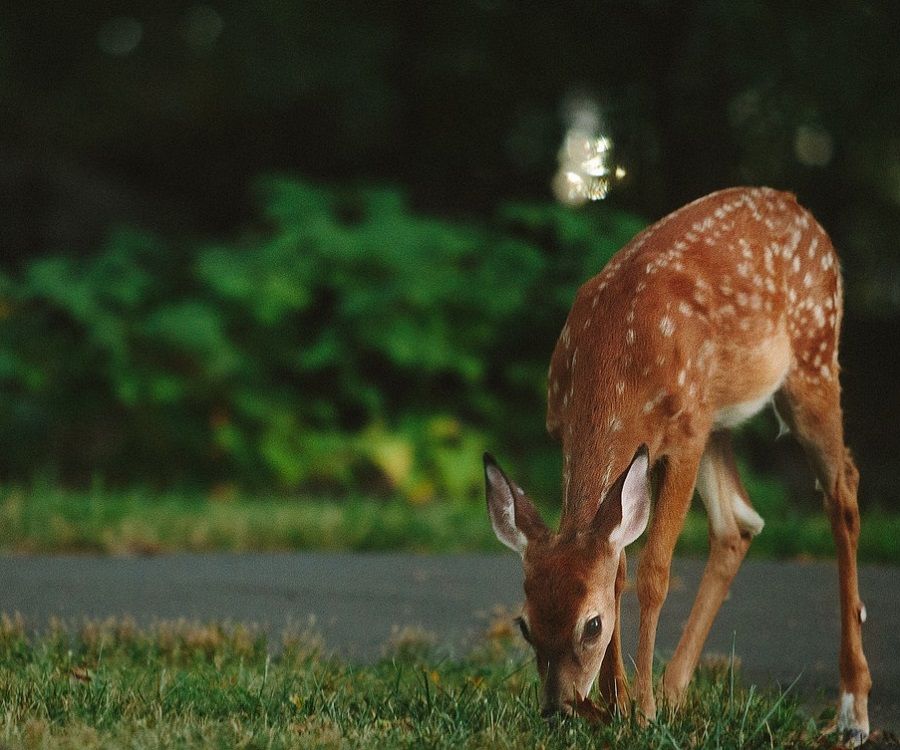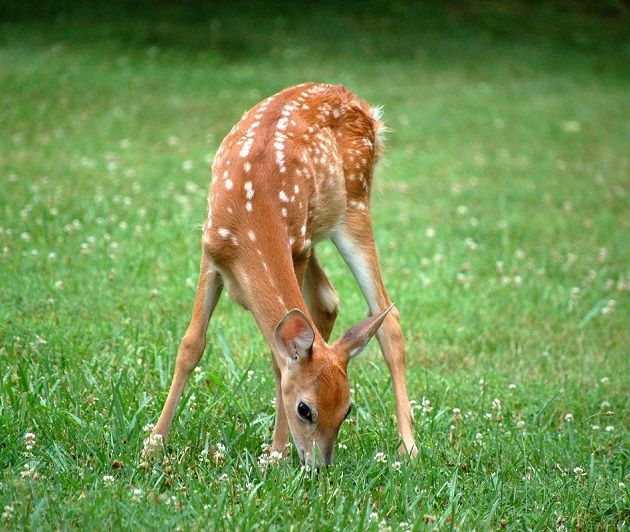How Deer Repellent Keeps Your Property Safe
We all love reindeer, but when local deer begin destroying property, some deer repellent action may need to be taken. The deer population in Pennsylvania is estimated to be around 1.5 million. You have probably seen deer around your neighborhood, especially if you live in a rural or suburban area. And as much as we enjoy seeing deer in nature, the damage to your lawn and property by those same deer can be costly.
Late fall and winter is the time period that we focus on deer suppression to protect valuable plants and trees from deer damage. Burkholder PHC will outline a few ways deer can damage your yard and how particular repellent methods can help keep deer out of your garden beds and landscape.
How Do Deer Destroy Lawns?
Deer damage lawns in two primary ways: feeding and antler-rub. These methods damage properties in different ways and may require other solutions to resolve.
Deer Feeding
Feeding is one of the more common ways deer can damage properties, and homeowners should utilize deer repellent. Deer can and will eat various plants and trees in one’s yard: grass, flowers, fruits, vegetables, and leaves; deer will even eat twigs and bark. While deer eating your plants is an obvious problem, a byproduct of their feeding is another type of damage called “browsing.” Browsing is the damage that deer cause by tearing, stomping, and compacting soil when scavenging for food.
Antler-Rub
During winter, male deer rub their antlers on trees to scrape off the velvet-like cover on their antlers to make way for a new cover in spring. The result of antler-rub is vertical scrapes and shredded bark on trees. This damage exposes the cambium, the layer that resides between the inner and outer bark. Cambium helps nutrients move throughout trees, and having this layer exposed to weather, pests, and diseases can harm your trees.


How Deer Repellent Programs Can Help
To make sure that your property is safe from feeding, browsing, and antler-rub damage, some level of deer repellent may be necessary. Below are some methods we can use to prevent deer from intruding on and damaging your property.
- To protect plants from deer feeding, agents that change their taste/texture profile can condition deer to stop eating and avoid your plants entirely. Deer have heightened senses of smell and taste, so these deer repellent sprays/agents use smells and tastes that deer generally avoid.
- For browsing, physical barriers can prevent deer from entering certain areas of a property, like a flower bed or the boundaries of the property itself.
- Metal or plastic trunk sleeves or wraps around trees can help stop antler-rub, especially young or newly planted trees, along with special soaps and odor deterrents to push deer to other unprotected trees.
Each of these measures also changes depending on the season. For example, the tactics for deterring deer in fall and winter may differ from spring and summer, when controlling deer behavior can be more manageable.
Burkholder PHC has a specialty program to help property owners protect their landscapes. If you are interested in our program, reach out to us today.
Contact Burkholder for Deer Repellent Services
If you need deer repellent and want to keep your property safe from deer, contact Burkholder PHC. We have experience helping homeowners protect their yards from various pests, including deer, insects, and many plant diseases. Our plant health care team is highly qualified and knowledgeable about all aspects of plant health care issues and solutions. We will work with you, inspecting your property to determine the best course of action to keep your plants healthy and beautiful. Contact us today for more information about our services and how we can help you.

